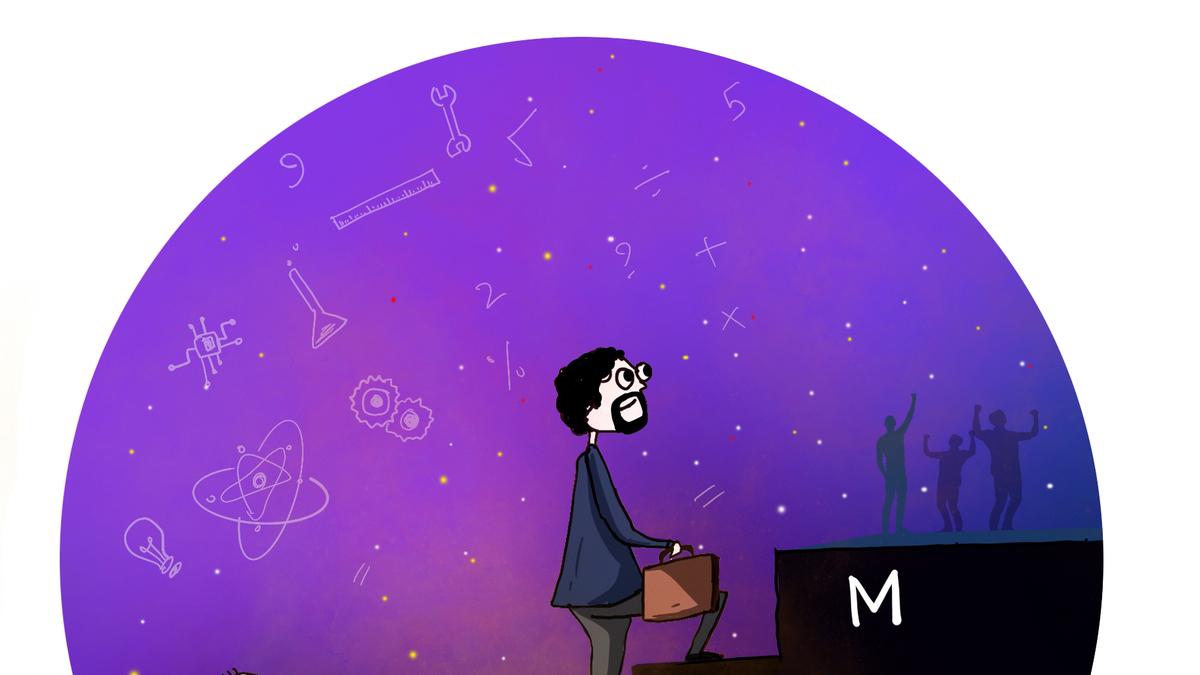In India, we hold a place of reverence for those who study STEM subjects (science, technology, engineering, maths). These drive people upwards, through social and financial hierarchies, sometimes enabling people to break through caste.
We all know about the STEM gender gap: “Women [in South Asia] are severely underrepresented in the STEM workforce and only make up 25 percent of STEM college and university students,” says this blog from the World Bank website, published this month.
A study in France, which included 26.53 lakh children aged 5-7 years, has found that girls and boys began school with the same mathematical abilities, but a gender gap began emerging in the first year of their formal education.
While more studies are needed on the why of this, it’s also true that through school, college, and in work life, people in STEM have more power, money, and respect. Genders other than men are constantly playing catch-up in this race to achieve what international non-profits and global business leaders are saying we must: “The widespread adoption of technology in everyday life has made STEM… education a prerequisite for achieving sustainable and inclusive growth, and social well-being,” a senior fellow at the Observer Research Foundation said, last year.
Why is STEM “a prerequisite for achieving sustainable and inclusive growth, and social well-being”? If I am an artist, a farmer, or a journalist does that exclude me from this elite STEM club that is going around creating “sustainable and inclusive growth”?
Don’t get me wrong: if a person wants to study any of the STEM subjects, of course they should, irrespective of gender. It is wrong for a parent or teacher to tell a girl child who has an interest in physics and chemistry to take an arts subject, because women must of course get married and have babies, both of which are solely their responsibility. But it is equally wrong for us to emulate STEM to the extent that boys — seen as higher in the social structure, who should therefore take a subject matching that status — are forced into engineering and medical degrees they may have little interest in.
This also does not mean women should live in LALA (languages, arts, literature, anthropology) land and stay away from calculating how much money society owes them (for childcare or as a result of the pay gap, for instance). Access to technological tools that can help women is also important.
At a time when Microsoft has just announced 9,000 jobs cut and the unstable Elon Musk is the poster-boy of tech-brotherhood, we would do far better to look to people with creative problem-solving abilities. Somehow though, there is this assumption that those who study the humanities abandon logic, reason, and critical thinking for drugs, sex, and rock and roll.
What if people from SHAPE (Social Sciences, Humanities, and the Arts for People and the Economy) ruled the world? What if those who do science and those who do humanities work as a team, to create cities for all people, not just able-bodied youthful men?
“If we truly want our schools to be inclusive, safe and nurturing, we must begin by reflecting the world as diverse, complex and full of possibility,” says this story.
Toolkit
Ishan Chakraborty, an assistant professor at Jadavpur University’s Department of English, describes himself as “a 33-year-old cis gay man with deafblindness”. Through his essay ‘Am I man enough?’ he talks about “othering” in school that was “intertwined with degendering”. Chakraborty and several others are a part of non-profit Rising Flame’s Insights, a collection of stories, comics, and more, at the intersection of mental health, gender, and disabilities.
Wordsworth
Gender fluid
A person whose gender moves along a spectrum, and may slide along this, changing with time and situation. Ruth Fernando, an English lecturer at the University of Sri Jayewardenepura in Sri Lanka, published a paper last week titled: ‘Man, Woman Or Both? Shakespeare’s Treatment of Androgyny and Lady Macbeth’s Disempowerment’. In it she claimed all the three main characters in the play were gender fluid. She also said the witches were probably men.
Ouch!
“…the concept of live-in-relationship is against the settled law in the Indian middle class society. The concept of live-in-relationship goes against the interest of the women since a man can marry even after live-in-relationship (with) a woman or number of women but it is difficult for the women to find a life partner after a breakup.”
Justice Siddharth, Allahabad High Court
Woman we met
Sushila Panwar
Aunty ka Dhaba is a landmark on the Letibunga-Pokhari road in Uttarakhand. She, her daughter, and son run a roadside kitchen with a table and a few chairs. Sushila Panwar, 61, who is everybody’s aunty, says it has been 18 years since she began running it. She has five children, of which two work with her, cooking Maggi, aloo paratha, rajma-chawal, pahari staples. She says they own land they farm, but, “Side business hona zaroori hai, for financial stability,” she says. She lost her husband four years ago, and says people around appreciate her for continuing the business. But also, “I am only involved with my own work. Duniya kya sochti hai mujhe usse koi matlab nahi (What the world thinks has nothing to do with me).”
Published – July 06, 2025 07:59 am IST
